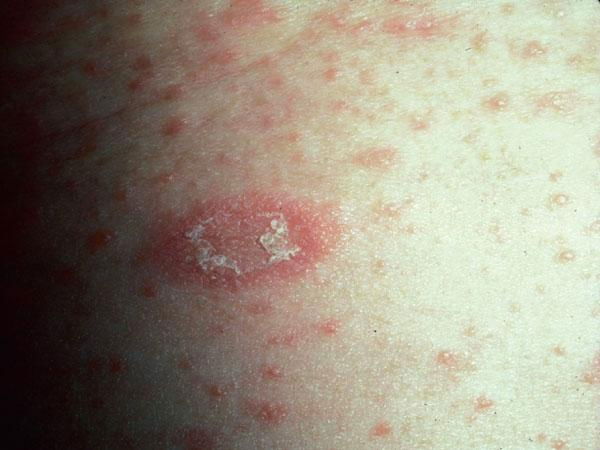Pityriasis rosea is a skin condition that is characterized by red or pink, peeling rashes that appear mainly on the trunk. This rash gradually spreads and lasts for 6 to 12 weeks.
In most cases, there is one main rash surrounded by several smaller ones. It usually happens once in the lifetime, in the spring our autumn, although many people can present with yearly rashes around the same time.
Treatment of pityriasis rosea should be guided by a dermatologist. Treatment goals are aimed at relieving any associated symptoms, however the rashes usually resolve on their own overtime without any scarring.

Common causes
Although there is no specific reason why pityriasis rosea occurs, it may be triggered by a virrus that causes a mild skin reaction. This virus is not transmissible from person to person, however, as pityriasis rosea in itself is not contagious.
Women are more prone to develop pityriasis rosea, especially pregnant women or women under the age of 35. However, this rash can appear in anybody at any age.
Main symptoms
The main symptoms of pityriasis rosea are:
- Pink or red patch on the skin between 2 and 10 cm in size
- A Single large spot, also called a herald spot, with several smaller spots around it
- Oval scaly plaques, that are rough in the center
- Itching at the site of the spots, which can be intense
- Malaise and loss of appetite
Skin lesions caused by pityriasis rosea are usually symmetrical and appear on the chest, back, abdomen, neck or arms, and last around 6 to 8 weeks.
Usually a few days before the spots appear on the skin, the patient experience a sore throat, fever above 38ºC (or 100.4ºF), gastrointestinal problems or joint pain.
These skin changes should be assessed by a dermatologist in order to identify the underlying cause and to start the most appropriate treatment. Learn more about what causes red spots on the skin and how they are treated.
Confirming a diagnosis
The diagnosis of pityriasis rosea is made by a dermatologist through an evaluation of the patient's symptoms, health history and physical examination. The doctor will closely assess the characteristics of the spots on the skin using a dermatoscope.
This examination allows the doctor to rule out other skin lesions that may have similar characteristics, such as erythema multiforme, guttate psoriasis, lichen planus or tinea versicolor, for example.
If there is still any doubt about the diagnosis, the doctor may additionally collect a biopsy of the skin to be analyzed in the lab.
Treatment options
Pityriasis rosea disappears on its own after 6 to 12 weeks, however if you experience itching or discomfort, the dermatologist may recommend treatment with:
- Moisturizing creams, to help speed-up healing and soothe irritation
- Corticosteroid creams (like hydrocortisone or betamethasone), to relieve itching and skin swelling
- Allergy medications (like hydroxyzine or chlorphenamine) which are used when itching interferes with sleep
If symptoms do not improve with treatment, the doctor may advise additional treatment with UV-B rays, which are applied directly to the affected skin.
In some people, the rash may persist for over 2 months until it disappears, although it will usually not leave any scarring or marks.






























